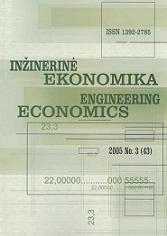New Public Management: Theoretical and Practical Aspects
New Public Management: Theoretical and Practical Aspects
Author(s): Ramunė Čiarnienė, Milita VienažindienėSubject(s): Economy
Published by: Kauno Technologijos Universitetas
Keywords: public organizations; New public management; human resources management
Summary/Abstract: For over two decades a wave of public sector management reforms has swept through developed, transitional and developing countries. The role and institutional character of the state and of the public sector have been under pressure to be more market-oriented and private sector-oriented, initially in developed countries and later in some developing countries. The article concentrates on New public management (NPM). The authors give a theoretical description and key components of New public management, human resources management influenced by NPM. As underlying and fundamental aim of the new public management reform program is to transform management of public organizations into a business-like management. NPM incorporates the importation of private sector management systems and techniques into the public services. Seeking for the effectiveness of public institution’s activity the importance of human resources becomes especially evident, because it is not only the most important resource of public organizations, but also the most sensitive field, therefore when managing it, it is necessary to invoke modern prime methods and refer to the new human resource management scientific research results. The main change trends of the HR system management in the public sector should be the following ones: · The expansion of the employee development possibilities. The quality of the state institutions depends on the knowledge and qualifications of employees and the ability to use them. · The stimulation of the workers independence and creativity. The greater freedom of activity should be given to the civil servants encouraging their unconventional behavior. · The stimulation of good results and competitiveness. The greater orientation of workers to the final goal but not to the rules and procedures. The competitiveness enables to render the services of a better quality. · The development and expansion of collaboration, communication and information exchange. · The participating management style. The paper is divided into three parts. The first part examines the conception of New public management. Human resources management in public sector is introduced in the second part. The research on the ability to adapt the main NPM principles at Lithuania’s municipalities is presented in the third part.
Journal: Engineering Economics
- Issue Year: 2007
- Issue No: 5 (55)
- Page Range: 44-50
- Page Count: 8

